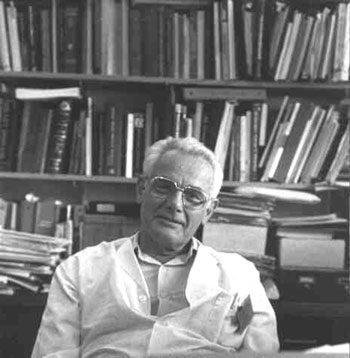Robert Arthur Bruce, MD
1916 — 2004

Bob Bruce was an unusual cardiologist-physiologist and clinical investigator who made contributions to CVD epidemiology in following cardiovascular function among large cohorts and in his development of the standard graded exercise test to perceived maximal load.
He was educated at Boston University and received his MD in 1940 from the University of Rochester, then spent most of the rest of his career as head of cardiology at the University of Washington.
His long-term colleagues in Washington described his development of the Bruce Test, now a standard of clinical protocol:
“As a young cardiologist at the University of Rochester, Dr Bruce recognized that exercise stress testing could play an important role in the evaluation of cardiac patients. The cumbersome Master’s Two-Step test, in common use at that time, was clearly inadequate to assess respiratory and circulatory function during varying degrees of sustained exertion. He and his early coworker, Dr Paul Yu, who had recently arrived from China, collaborated to develop a treadmill exercise test. His first publication on exercise testing was in 1949. . . . Initially, Dr Bruce and coworkers used a single-stage test, but it soon became clear that multiple stages would afford advantages. Shortly after moving to Seattle in 1950, Dr Bruce modified his test to comprise 4 progressive stages. Subsequently, the standard Bruce Exercise Treadmill Test evolved into its present form, with seven 3-minute stages.
An important achievement during his early years at the University of Washington was the conception and validation of the multistage exercise protocol in 1963. Subsequently, an extensive database was used to develop normal standards based on age, sex, and habitual pattern of activity. The duration of exercise then became the principal measurement for the estimation of what he termed ‘functional aerobic impairment.’ Today’s near-exclusive emphasis on the ECG response to exercise is at odds with Dr Bruce’s concept of exercise testing, in which substantial attention was directed to exercise performance and heart rate and blood pressure changes, coupled with targeted examination of the patient during and immediately after exertion. From such observations, exercise-induced hypotension was identified as a manifestation of fixed stroke volume and a strong predictor of adverse long-term outcomes.”
Exercise physiologists generally prefer a more graduated accession of treadmill work with plateaus to truly establish maximal work capacity and O2 consumption. Nevertheless, the Bruce Test became the clinical standard in cardiology by wide acclamation.
Bruce was among the first to demonstrate the predictive value of the response to graded exercise in large populations of Taiwanese and in his locally organized Seattle Heart Watch. He was a demanding but supportive colleague and mentor, encouraging the best performance from his students. (HB)
Sources
Robert A. Bruce, in an interview recorded by Henry Blackburn, 3 October 2002, Seattle, WA, History of Cardiovascular Epidemiology Collection, University of Minnesota.
Kennedy, J.W., Cobb, L.A. and Samson, W.E. 2005. ‘Robert Arthur Bruce, MD. Exercise cardiology’. Circulation. 111, 2410-1.
Marquis’s Who’s Who on the Web. ‘Robert A. Bruce’. Available from: http://search.marquiswhoswho.com/executable/SearchResults.aspx?db=E
[Accessed 12 December 2006].